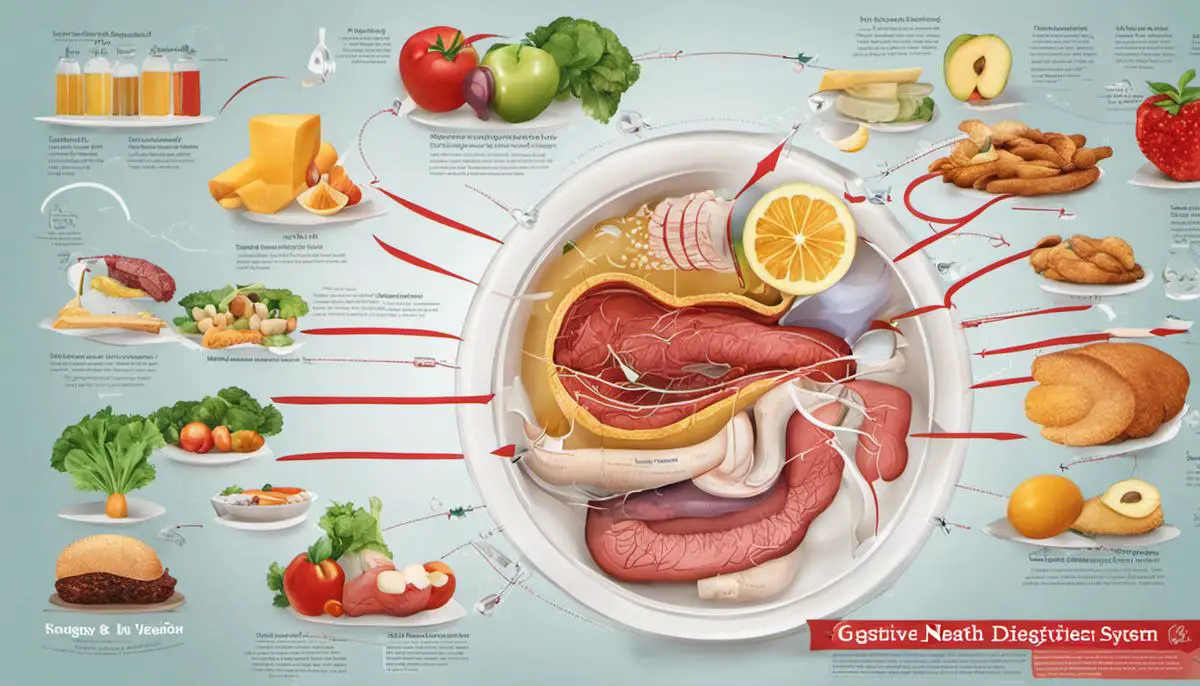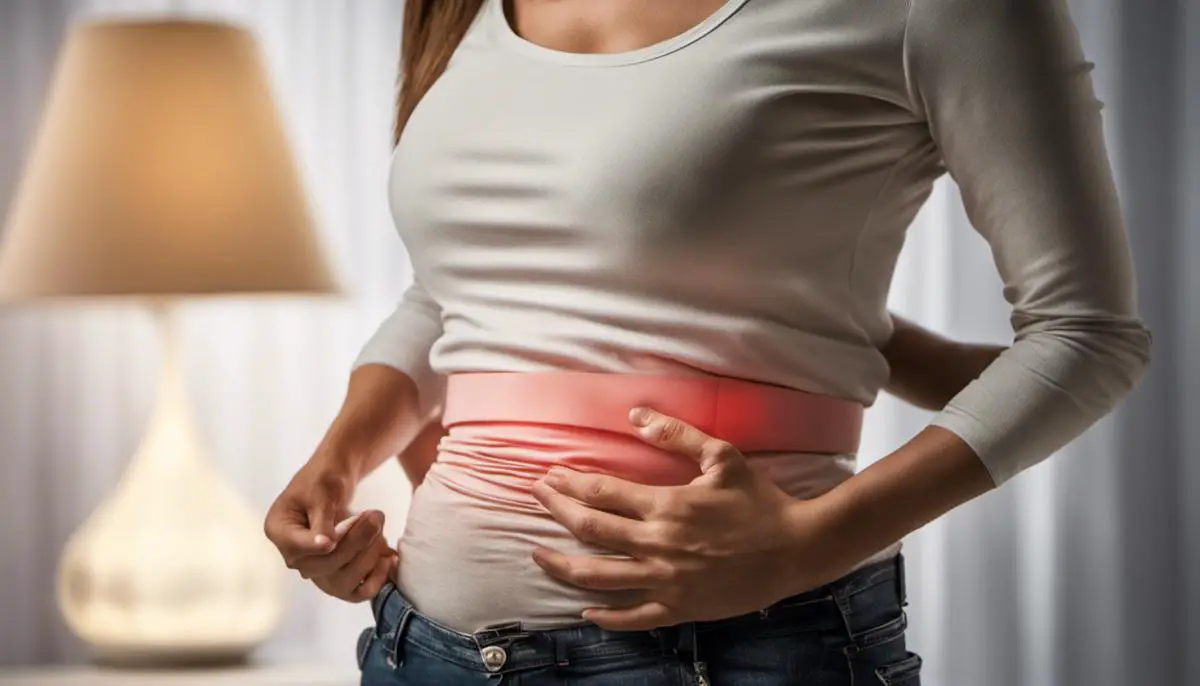Abdominal bloating and pain are ubiquitous health concerns that affect a vast demographic, irrespective of gender, age, and ethnicity. They manifest in numerous forms and are often considered typical, disregarded as mere discomforts resulting from overindulgence or improper food choices. However, persistent or chronic abdominal bloating and pain may imply more serious underlying medical conditions like irritable bowel syndrome or ovarian cysts. This comprehensive guide delves into the diverse causes of these symptoms, drawing attention to both widespread and unsuspected culprits. It elucidates the varied symptoms and diagnostic techniques employed in medical practice, and elaborates on the array of options available for treating abdominal bloating and pain. Leveraging medical approaches alongside natural remedies, this guide encourages readers to make well-informed choices regarding their health. Lastly, it underscores the viability of certain prevention methods and lifestyle alterations that promote a healthy digestive system.
Causes for Abdominal Bloating and Pain
Dietary Causes of Abdominal Bloating and Pain
One of the most common contributors to abdominal bloating and pain is diet. Consuming high amounts of fatty foods could delay stomach emptying and result in discomfort. Similarly, overeating or eating too quickly may lead to a bloated feeling. Certain foods are known for producing gas more than others, including beans, lentils, broccoli, cabbage, onions, and carbonated drinks. Overconsumption of salt could lead to bloating caused by water retention while consuming sugar alcohols (common in sugar-free foods and drinks) may induce bloating and other digestive issues.
Gastrointestinal Disorders
People who suffer from gastrointestinal disorders are more likely to experience regular episodes of abdominal bloating and pain. Among these disorders is irritable bowel syndrome (IBS), which causes these symptoms along with constipation, diarrhea, or both. Common IBS triggers include stress, hormonal changes, and certain foods or beverages.
Another disorder, Crohn’s disease, affects the lining of the digestive tract. Symptoms include abdominal pain, severe diarrhea, fatigue, weight loss, and malnutrition. Though the exact cause is unclear, immune system malfunction and hereditary factors seem to play parts in the development of this disease. Likewise, gastroesophageal reflux disease (GERD) can cause a bloated feeling due to acid reflux and heartburn.
Medical Conditions and Abdominal Bloating
Some other medical conditions can lead to abdominal bloating and pain such as ovarian cysts. These are fluid-filled sacs that grow on a woman’s ovary. While most cysts don’t cause symptoms, some can result in bloating, abdominal pain, and a feeling of fullness.
Endometriosis, a condition where tissue similar to the uterine lining grows outside the uterus, can also cause abdominal bloating and pain. Similarly, colon cancer, although not as common, may start with symptoms such as bloating, gas, and weight loss.
Hormonal Changes and Abdominal Bloating
Hormonal fluctuations can cause water retention and bloating, especially during the menstrual cycle. Some women might notice feelings of bloating and pain in the abdominal area in the days leading up to their periods. Hormonal changes related to menopause may also result in bloating.
Medication Side Effects
Certain medications may also cause abdominal bloating and discomfort as a side effect. These include nonsteroidal anti-inflammatory drugs, opioid pain medications, and certain types of antidepressants. It’s important to consult healthcare providers if these or other unusual side effects occur after beginning a new medication.
Lifestyle Factors
Factors like stress and lack of sleep have been linked to a higher propensity for abdominal bloating. Additionally, those who live a sedentary lifestyle might also experience bloating more often. Regular physical activity helps the body to move gas through the intestines more quickly, alleviating bloating.
To fully comprehend the nature of abdominal bloating and pain, it’s essential to recognize that these symptoms can be due to a variety of reasons. These can range from simple lifestyle or dietary choices to more severe medical conditions. Notably, persisting symptoms of abdominal discomfort should not be ignored, as they could be indicative of serious health problems. Hence, it’s highly advised to consult with healthcare professionals when such symptoms continue to keep potential health risks in check.

Symptoms and Diagnosis
Deciphering the Symptoms: Abdominal Bloating and Pain
The sensation of abdominal bloating typically manifests as a feeling of tightness or fullness in the middle section of the body. This feeling can lead to discomfort and at times even involve painful symptoms. It’s quite common to observe noticeable swelling, or distension, of the belly during instances of abdominal bloating. Conversely, abdominal pain is an overall term used to describe any discomfort or distress in the region extending from the chest down to the groin.
Types and Variation of Abdomen Discomfort
Abdominal bloating and pain can range in severity from mild and occasional discomfort to severe, persistent debilitating events. These symptoms might be acute (short-term) or chronic (long-term), constant, or come and go. Furthermore, the type of pain can also vary, with some patients describing the sensation as sharp, stabbing, cramp-like, twisted, or having a heavy, dragging sensation. Though abdominal bloating and pain is typical in many instances such as consumption of gassy foods or menstruation, persistent bloating and pain can be a sign of an underlying gastrointestinal disorder.
Underlying Causes of Abdominal Bloating and Pain
There can be many causes for these symptoms, like indigestion, constipation, gastroenteritis, stress, irritable bowel syndrome (IBS), inflammatory bowel disease (IBD), gastritis or peptic ulcers, gallstones or pancreas issues, food intolerances or allergies, infections, or more rarely, certain types of cancers. Female-specific conditions like endometriosis, ovarian cysts or fibroids can also induce abdominal bloating and pain.
Typical and Atypical Symptoms
Typically, the presence of other symptoms alongside abdominal bloating and pain can suggest the possibility of a more serious underlying condition. These can include consistent nausea or vomiting, weight loss or gain, persistent digestive disturbances or changes in bowel habits, unexplained fatigue, or if the pain becomes worse during physical activity or at night. If an individual experiences severe abdominal pain, bloody stools, chest pain, shortness of breath, yellowish skin or eyes, or persistent vomiting, it is recommended to seek immediate medical help.
Diagnostic Processes
The diagnostic processes to identify the root cause of abdominal pain and bloating can be multifold. Initially, a medical professional would perform a thorough physical examination inquiring into the specifics of the symptoms and the patient’s medical history. This could be followed by a series of lab tests such as blood tests, stool or urine exams, or a breath test for bacterial overgrowth in the intestine.
Additionally, imaging methods such as ultrasounds, X-Rays, CT scans, or MRI might be recommended to visualize the organs in the abdomen and catch preliminary signs of any possible diseases. Endoscopic examinations involving the insertion of a long tube with a camera into the patient’s digestive tract may also be conducted to identify abnormalities such as ulcers, inflammation or tumorous growths. Depending on the outcomes from these diagnostic procedures, a treatment plan can then be developed.
Understanding Treatment Options
When experiencing abdominal bloating and pain, the exact cause must be identified through proper diagnosis for your healthcare provider to prescribe the most suitable treatment. Often, various methods of treatment can include medication to reduce inflammation, manage infections, or alleviate pain. In some cases, changes in diet may be recommended to manage conditions like irritable bowel syndrome (IBS) or food allergies. More severe cases dealing with issues such as gallstones, appendix problems, or certain types of cancer may require surgical interventions.
Additionally, adopting relaxation techniques and modifying lifestyle choices may prove beneficial. Regular physical activity and a nutritionally balanced diet can manage milder instances of bloating and pain, gradually easing the symptoms.

Photo by towfiqu999999 on Unsplash
Treatment Options for Abdominal Bloating and Pain
Examining Prescription Medications
Abdominal bloating and pain can be treated with various prescription medications, each addressing the specific underlying cause. Conditions like irritable bowel syndrome (IBS) or inflammatory bowel disease (IBD) might warrant the prescription of antispasmodics, which control gut muscle spasms, or anti-inflammatory drugs to minimize inflammation. If constipation is causing discomfort, laxatives could be recommended. Infections leading to pain and bloating would require antibiotics. For cases where acid reflux triggers stomach pain and bloating, your healthcare provider could suggest proton pump inhibitors.
Over-the-Counter Options
There are several over-the-counter medications that can help alleviate abdominal bloating and pain. Antacids can neutralize stomach acid to help with heartburn or acid reflux, while simethicone-based medications can help to reduce gas and bloating. Laxatives are available without prescription for temporary relief of constipation. However, they should be used with caution and only when necessary, as overuse can lead to dependency. Probiotic supplements have also been found useful in maintaining gut health and reducing issues related to imbalances in the gut microbiome.
Dietary Modifications
Adjusting your diet can often significantly improve or even eliminate symptoms of bloating and abdomen pain. This might involve identifying and eliminating food triggers from your diet – common culprits include foods high in fat, dairy products, and certain types of carbohydrates known as FODMAPs. Eating smaller, more frequent meals instead of large meals can help prevent overeating and reduce bloating. Keeping well hydrated, and incorporating fiber into your diet can prevent constipation. Moreover, limiting sodium intake could prevent water retention which often results in bloating.
Physical Therapies
Physical therapies can also offer relief from abdominal bloating and discomfort. Among these treatments, abdominal massage has shown success in contributing to the relief of symptoms by helping to move stool through the colon. Therapies such as cognitive-behavioral therapy or biofeedback can also be useful in managing the impact of stress on the gut, as psychological stress can exacerbate bloating and pain.
Appropriate Exercises
Regular physical activity is beneficial in managing many physical conditions, including abdominal pain and bloating. Regularly engaging in light exercises such as walking, yoga, or swimming can help stimulate regular bowel movements, reduce stress, and overall promote better digestion. Specific yoga poses intended to improve digestion, such as the child’s pose or supine twist, might be particularly beneficial.
Engaging with Healthcare Professionals
When experiencing abdominal bloating and pain, it is crucial to consult with healthcare professionals before embarking on any new treatment regimen. This could range from taking over-the-counter medications, altering your dietary intake, or starting a novel exercise program. Such consultations will allow professionals to track your improvement, making sure that the strategies adopted cater to your unique needs. For instance, if a dietary supplement or probiotic is part of your treatment option, your healthcare provider can offer proper directions, ensuring you make choices that maximize benefits. Be quick to alert your healthcare provider upon noticing any unexpected or worsening symptoms.

Prevention Tips and Lifestyle Changes
Modifying Diet to Alleviate Abdominal Bloating and Pain
A suitable diet management strategy can go a long way in mitigating abdominal bloating and pain. It would be worthwhile to lower your intake of gas-inducing foods such as beans, lentils, broccoli, onions, cabbage, and fizzy beverages. Diets rich in fiber can help maintain your digestive health, but it’s crucial to up your fiber consumption gradually to allow your digestive system to adapt smoothly. Key to note also is the essentiality of remaining well-hydrated as dehydration can trigger constipation, which may result in bloating and discomfort.
Remember, how you eat matters just as much as what you eat. Rapid eating can lead to air swallowing, potentially causing bloating. Therefore, it might prove beneficial to adopt the practice of having smaller, more frequent meals over having three large meals a day. This practice can reduce the strain on your digestive system and play a part in reducing bloating.
Exercise As Means of Prevention Against Bloating and Pain
Physical activity can stimulate the muscles in your gut and help prevent constipation and bloating. Regular exercise can help keep the food moving through your digestive system and discourage the buildup of gas. Activities like walking, swimming, cycling, or yoga can all support a healthy digestive system. It is suggested to aim for at least 30 minutes of moderate-intensity exercise most days of the week.
Lifestyle Changes for a Healthy Digestive System
Stress and anxiety can disrupt the functioning of your digestive system, leading to abdominal pain and bloating. Exploring stress management techniques such as meditation, deep-breathing exercises, and yoga can help manage these symptoms.
When it comes to drinks, alcohol and caffeinated beverages such as coffee and certain teas can increase the risk of bloating. Reducing your intake of these and increasing your consumption of water can help lower bloating.
Smoking can cause a myriad of health problems, including indigestion and bloating. Quitting this habit can lead to improvements in your overall health, as well as reducing abdominal pain and bloating.
Consideration of Food Intolerances
Food intolerances can significantly contribute to abdominal bloating and pain. If you notice symptoms after eating certain foods, you may be intolerant. Common culprits include lactose, fructose, eggs, wheat and gluten. Keeping a food diary and tracking your symptoms can help identify potential triggers.
Probiotics: Aiding Digestive Health
Probiotic foods or supplements introduce beneficial bacteria into your digestive system, which can aid in digestion and alleviate symptoms of bloating and pain. Sources of probiotics can include yogurts, fermented foods like kimchi and sauerkraut, or dedicated supplements.
Medical Consultation
While lifestyle and dietary changes can help treat and prevent abdominal bloating and pain, it is essential to consult with a healthcare provider if symptoms persist or worsen. Chronic abdominal pain could be an indication of a more serious health condition that requires proper medical attention.

Empowerment through information and understanding can make a profound impact on managing and averting abdominal bloating and pain. While dietary modifications, in tandem with suitable exercises and other proactive habits, can substantively prevent flare-ups and maintain a healthy digestive system, it is vital to respect the uniqueness of each body and its response to different treatment methods. Thus, a conscious dialogue with healthcare professionals is indispensable when trying new treatments, be it medication, natural remedies or lifestyle changes. Remember, a pain-free life is not an elusive dream but a plausible reality that can be achieved through informed decisions, proactive care, combined with appropriate professional interventions.
